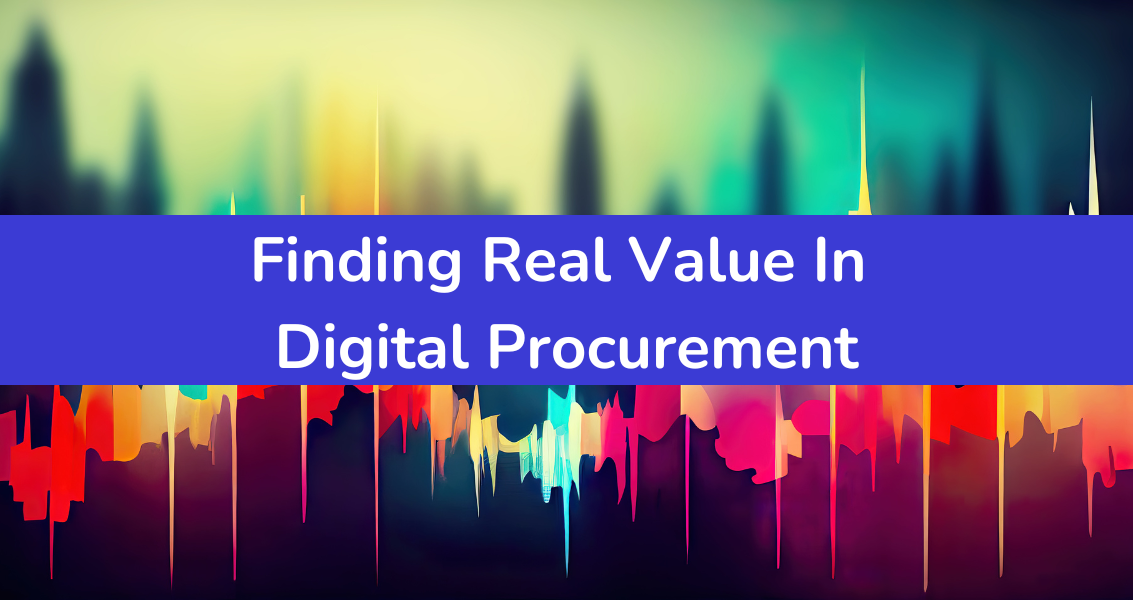The supply chain has always been a process that businesses have had to navigate. It’s a necessity for companies to find the best products at the most affordable price points, while also making sure those products arrive on time and in good condition. However, with an ever-growing number of suppliers and an increasingly complex supply chain, logistics is becoming more difficult than ever before. COVID-19 reminded us all that we’re susceptible to random supply chain disruptions, and need to find ways to build resiliency.
Luckily for businesses around the world, technology is constantly evolving and providing new ways to simplify complicated processes like procurement – from building procurement teams from scratch all the way through creating multiple online channels for sellers to sell their goods directly to shoppers online at their convenience!
There is a ton of unrealized value in an inefficient supply chain process.
In today’s ever-increasing world of digital procurement, there are many options for buyers to save money and improve their operations. However, one area that often goes overlooked is improving the efficiency of your supply chain process.
What’s even more overlooked is that there is value to be found by improving the efficiency of your indirect spend category. Indirect spend refers to all the purchases a business makes that are not directly related to the function of the business, but are still needed for operations. This could mean cellphones for employees, new office chairs, a caterer for special events, or even things like office fittings. Large enterprises usually don’t spend too much time stressing about indirect spend– but as a result, they’re leaving money on the table!
There are many different P2P systems out there, but it’s often difficult to know which one will work best for your organization. Different systems offer different features, and not all procurement software is ideal for large enterprises or complex organizations. The right solution will depend on the size of your business and its unique needs — so it may take some time before you find what works best for you.
While P2P systems are important, they are just one part of the larger procurement process. There is more value than simply having a P2P system in place. You can also get a significant return on investment by using it as an extension of your marketplace or other tools that handle your invoicing, approvals, and paperwork (e.g., spend management).
The amount of time, energy, and effort that most big companies’ procurement departments spend on sourcing indirect buys could be significantly reduced. There are so many inefficiencies related to the process, from getting multiple quotes, cost negotiations and approvals processes, to ensuring all the right paperwork is done. All of this red tape is costing big businesses a lot of time and energy that could be spent focused on their core business.
An online B2B marketplace can increase the value of your online procurement.
Procurement departments across the globe are constantly looking for ways to save money and improve efficiency. One of the newest solutions is to employ the use of an online business-to-business (B2B) Marketplace that enables procurement professionals to find, engage, and buy from suppliers and distributors all in one place.
A B2B Marketplace can add enormous value to a business by streamlining its traditionally tedious procurement processes. In fact, it can even help buyers reduce costs and increase revenue. These platforms can be especially useful if your company is looking for niche or specialized products/services that might not otherwise be easily accessible without having a direct connection with the supplier or vendor. A B2B Marketplace allows buyers to filter vendors based on various settings specifically designed with the needs of large companies in mind. This could include things like location, shipping times, ESG requirements, vendor size, or other company-specific requirements.
A B2B Marketplace also helps buyers find the best deals by allowing suppliers to compete for business, which means they’ll offer better terms than they would have otherwise. The more competition there is in this environment, the more likely it’ll be that there’s a good deal!
This type of service is especially important for large enterprises since they typically have thousands of suppliers that provide products or services ranging from office supplies to cleaning services, etc., which means that it can be difficult for them to monitor all expenses effectively with traditional methods such as spreadsheets and manual data entry into ERP systems.
In-direct spend optimization can be done through a B2B marketplace specifically designed for use by large enterprises. A B2B marketplace allows users to access all kinds of suppliers who provide goods and services based on their business needs without having to search for each supplier individually using different websites or apps. Instead, buyers would simply log into one online platform where all the relevant providers are listed together according to categories such as industry sectors or geographical regions, so that they can easily find exactly what they need.
The Digital Future of Procurement
In the digital future of corporate procurement, B2B marketplaces are the future. You can buy and sell on them and get the best prices, but that’s not all they offer. They also give you visibility into your supply chain—a powerful tool to make informed decisions that drive better outcomes.
As procurement becomes more digital, companies must be able to find value in their supply chain processes. The good news is that there are plenty of ways to do this. Online business-to-business marketplaces can help companies find new suppliers or make existing relationships more efficient by giving them better insights and more efficient processing.
